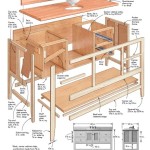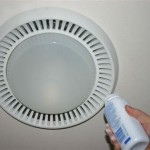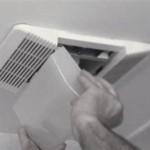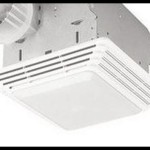What To Do If Your Bathroom Smells Like Mold On Wall
The presence of a moldy smell emanating from bathroom walls represents a significant concern, often indicative of underlying moisture problems that, if left unaddressed, can lead to structural damage and potential health issues. Identifying the source of the odor and implementing appropriate remediation strategies are crucial to maintaining a healthy and habitable environment.
Initially, differentiation between a general musty odor and the distinct smell characteristic of mold is paramount. Mold often exhibits an earthy, damp, or sometimes sour aroma. This smell arises from microbial volatile organic compounds (MVOCs) produced by the mold as it metabolizes organic material. These compounds are released into the air and are responsible for the characteristic odor associated with mold growth.
The primary driver of mold growth in bathrooms is excessive moisture. Bathrooms, by their nature, are prone to humidity from showers, baths, and inadequate ventilation. This elevated moisture level creates an ideal environment for mold spores, which are ubiquitous in the air, to germinate and proliferate on surfaces containing organic matter, such as drywall, wood, and grout.
The walls in the bathroom are particularly susceptible to mold growth due to several factors: Splashing from showers and sinks directly wets the walls. Condensation can accumulate on cold wall surfaces, especially during and after hot showers. Hidden leaks behind walls from plumbing fixtures or pipes provide a constant source of moisture. Furthermore, inadequate ventilation prevents moisture from escaping the bathroom, exacerbating the problem.
Identifying the Source of the Moldy Smell
Pinpointing the precise source of the moldy smell is the first step in addressing the problem. This requires a systematic inspection of the bathroom, focusing on areas most likely to harbor mold growth. Start with a visual inspection of the walls, paying close attention to the following:
Areas near the shower or bathtub: These areas are frequently exposed to splashing and are prone to water damage. Look for visible signs of mold, such as discoloration (black, green, brown, or white spots), staining, or bubbling paint. Feel the wall for dampness or softness, which can indicate water damage behind the surface.
Areas around the sink and toilet: Check the caulk and grout around the sink and toilet for cracks or gaps, as these can allow water to seep behind the fixtures. Look for signs of water damage on the wall behind the sink and toilet, such as peeling paint or discoloration.
Corners and ceilings: These areas are often poorly ventilated and can accumulate moisture. Inspect corners and ceilings for visible mold growth or water stains.
Behind the toilet: Leaks around the base of the toilet can go unnoticed for extended periods, leading to significant mold growth. Check for dampness or discoloration on the floor and wall behind the toilet.
Inside cabinets: Check under the sink and in any cabinets adjacent to the shower or bathtub. Leaks in plumbing pipes can cause mold to grow inside these enclosed spaces.
Check Grout Lines: Grout is a porous material and prone to mold growth. Inspect grout lines for discoloration and clean with an appropriate cleaner.
In addition to a visual inspection, a moisture meter can be used to detect hidden moisture behind walls. A moisture meter measures the moisture content of building materials. If the meter reading is elevated in a particular area, it suggests the presence of moisture, which may be conducive to mold growth.
Addressing Minor Mold Growth
If the mold growth is limited to a small area (less than 10 square feet) and is on a non-porous surface, such as tile or grout, it can often be cleaned using household cleaning products. However, it is essential to take appropriate precautions to protect oneself from exposure to mold spores.
Before cleaning, wear personal protective equipment (PPE), including gloves, a face mask or respirator, and eye protection. This will help prevent the inhalation of mold spores and contact with skin. Ensure the bathroom is well-ventilated by opening windows and turning on the exhaust fan.
For cleaning, several options are available. A mixture of bleach and water (1 part bleach to 10 parts water) is a common disinfectant solution. However, bleach should never be mixed with ammonia or other cleaning products, as this can create toxic fumes. Alternatively, a commercial mold and mildew cleaner can be used, following the manufacturer's instructions carefully.
Apply the cleaning solution to the affected area and scrub vigorously with a brush or sponge. Allow the solution to sit for several minutes to kill the mold. Rinse the area thoroughly with clean water and dry it completely. Ensure all materials used in cleaning are disposed of properly.
After cleaning, monitor the area regularly for any signs of regrowth. If the mold reappears, it indicates that the underlying moisture problem has not been addressed and further investigation is necessary.
Addressing Significant Mold Growth and Moisture Problems
If the mold growth is extensive (more than 10 square feet), is on porous materials such as drywall or wood, or if the source of the moisture is unknown, it is best to consult with a qualified mold remediation professional. Attempting to remediate significant mold growth without proper training and equipment can spread the mold spores and worsen the problem. Mold remediation professionals have the expertise and equipment to safely and effectively remove mold and address the underlying moisture issues.
A mold remediation professional will typically conduct a thorough inspection of the bathroom to determine the extent of the mold growth and the source of the moisture. They will then develop a remediation plan that outlines the steps necessary to remove the mold and prevent it from returning. This may involve removing and replacing affected materials, such as drywall or carpeting, cleaning and disinfecting surfaces, and addressing the source of the moisture.
Addressing the source of the moisture is crucial to preventing mold from returning. This may involve repairing leaks in plumbing fixtures or pipes, improving ventilation in the bathroom, or addressing condensation problems. Properly sealing and caulking around sinks, toilets, and showers can prevent water from seeping behind walls. Regularly cleaning and disinfecting the bathroom can also help prevent mold growth.
One of the most important factors in preventing future mold growth is proper ventilation. An exhaust fan should be used during and after showers and baths to remove moisture from the air. The fan should be powerful enough to adequately ventilate the bathroom. If the bathroom does not have an exhaust fan, it may be necessary to install one. Keeping the bathroom door open after showering can also help improve ventilation.
Furthermore, regular inspection of the bathroom for signs of water damage or mold growth is essential. Addressing small problems early can prevent them from escalating into larger, more costly issues. By proactively addressing moisture problems and maintaining a clean and well-ventilated bathroom, mold growth can be prevented, and a healthy living environment can be maintained.
The presence of mold in the bathroom can trigger a variety of health problems, particularly in individuals with allergies, asthma, or other respiratory conditions. Mold can cause allergic reactions, such as sneezing, runny nose, itchy eyes, and skin rashes. It can also trigger asthma attacks and worsen respiratory symptoms. In some cases, mold exposure can lead to more serious health problems, such as lung infections.
Therefore, prompt action to identify and remediate mold growth in the bathroom is essential to protect the health of occupants. Addressing the problem at its early stages reduces the risk of widespread contamination and potential health consequences. Consistent effort in maintaining a dry and well-ventilated bathroom is key to preventing mold from re-emerging and maintaining a healthy indoor environment.

Why Does My Bathroom Smell Like Mildew Bioclean Remediation Llc

What Does Mould Smell Like Mouldmen

Ways To Prevent Mold In Bathrooms Forbes Home

How To Deal With Damp In Your House More Than

Bathroom Ceiling Mold Removal When To Clean Call Branch Environmental

Black Mold In Shower Is It A Cause Of Worry And What To Do About Aqa

Black Mold Pictures Causes And Signs Ultimate Guide

How To Tell If There Is Mold Behind Shower Tiles Nationwide Restorations

7 Warning Signs Of Mold In Your Home

Musty Smells In The House Finding Them And Getting Rid Of
Related Posts







